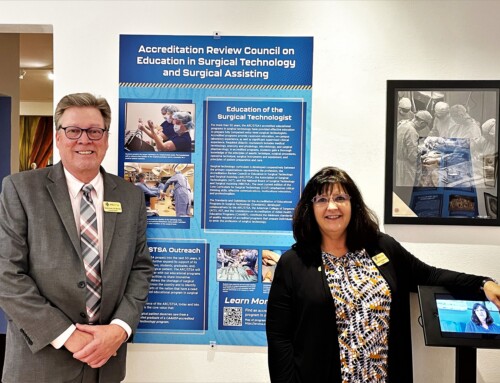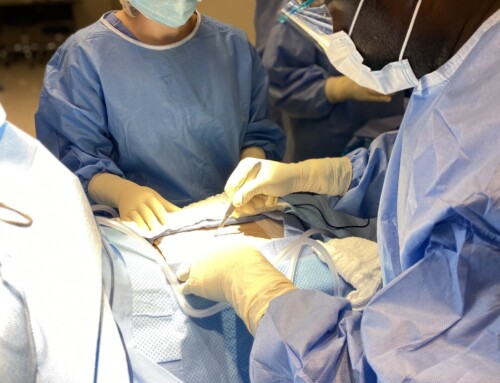Our amazing educators met in April to support one another, share tips for starting a sterile processing program, and discuss how sterile processing and surgical technology programs can have a mutually beneficial relationship. The word of the day was synergy, since educators reported that the benefits of the two programs working collaboratively were exponentially greater for their constituencies than the benefits of both programs operating in isolation.
Program Directors who have offered successful sterile processing programs for more than a decade joined to share their experience and expertise with those looking to start a sterile processing program. Nearly everyone on the webinar expressed that their communities desperately need sterile processing technicians, and that they have been approached by area hospitals and members of their advisory committees with requests to start sterile processing programs. Here are some tips and resources to get started.
Establish and Meet Community Need
- Survey your clinical affiliates and surgical technology advisory committee. Work with your community on a program that will best address the needs of hospitals to create a reliable, steady pool of sterile processing technician applicants.
- If there is an identified workforce shortage, there could be grant money available to buy equipment and start programs that address the shortages.
- Education is important to ensure proper sterilization. Attendees discussed the critical importance of the sterile processing department’s work before the patient even arrives to the OR. One gave the example of an endoscopy scope that has 237 steps to clean it!
Mutually Beneficial
- Those with successful sterile processing programs underscored the importance of using existing resources. Use what you have and don’t reinvent the wheel. Pull existing sterile processing components from your surgical technology curriculum and supplement content using sterile processing textbooks.
- Adding a sterile processing program can benefit your surgical technology program. One attendee shared how adding sterile processing has allowed her to secure a third full-time instructor and additional budget for instrumentation and equipment that both programs can use, which has opened up more Perkins funding.
- All on the call agreed that completing sterile processing courses gives surgical technology students an edge and increases their confidence and ability to adapt to the OR. Surgical technology students benefit from spending time in the sterile processing and/or endoscopy department to appreciate where sterility begins. One attendee shared that completing the sterile processing course prior to the surgical technology program has increased their CST pass rate.
Curriculum and Certification
- Curriculum can vary to be flexible to meet the community need. Those on the call had sterile processing programs ranging from six credits to 19 credits.
- Many sterile processing programs are offered online, with an in-person lab and clinical externship.
- Sterile processing can be offered as a standalone course/certificate, as a “stackable” certificate, or completion of it can add bonus points to a surgical technology program application.
- Offering it as its own course can be a good option for faster completion when the community is in dire need.
- Look for other “add-ons” that could make sense. Several program directors with both ST & SP programs also have added endoscopy reprocessing certificate options.
- Currently, there are no accrediting bodies that provide programmatic accreditation for sterile processing technician programs.
- Programs can choose to use the Certified Registered Central Service Technician (CRCST) examination offered by the Healthcare Sterile Processing Association (HSPA), or the Certified Sterile Processing and Distribution Technician (CSPDT) examination offered by the Certification Board for Sterile Processing and Distribution, Inc. (CBSPD), as their certification examination. Tip: use books from both exams when building your curriculum.
Gather Resources
- Ask for sterile processing donations from your clinical sites.
- Seek donations from companies such as Steris and 3M.
- Make a wish list for the bigger items such as ultrasonic sterilizers.
- Create instrument sets to go home with students and have them return them before clinical.
- Check out textbooks from Sterile Processing University.
- Review the educational resources available on the Healthcare Sterile Processing Association (HSPA) website.
Keep an eye on our social media pages and our EdAccred website for the next Better Together: Success Strategy Talk.



